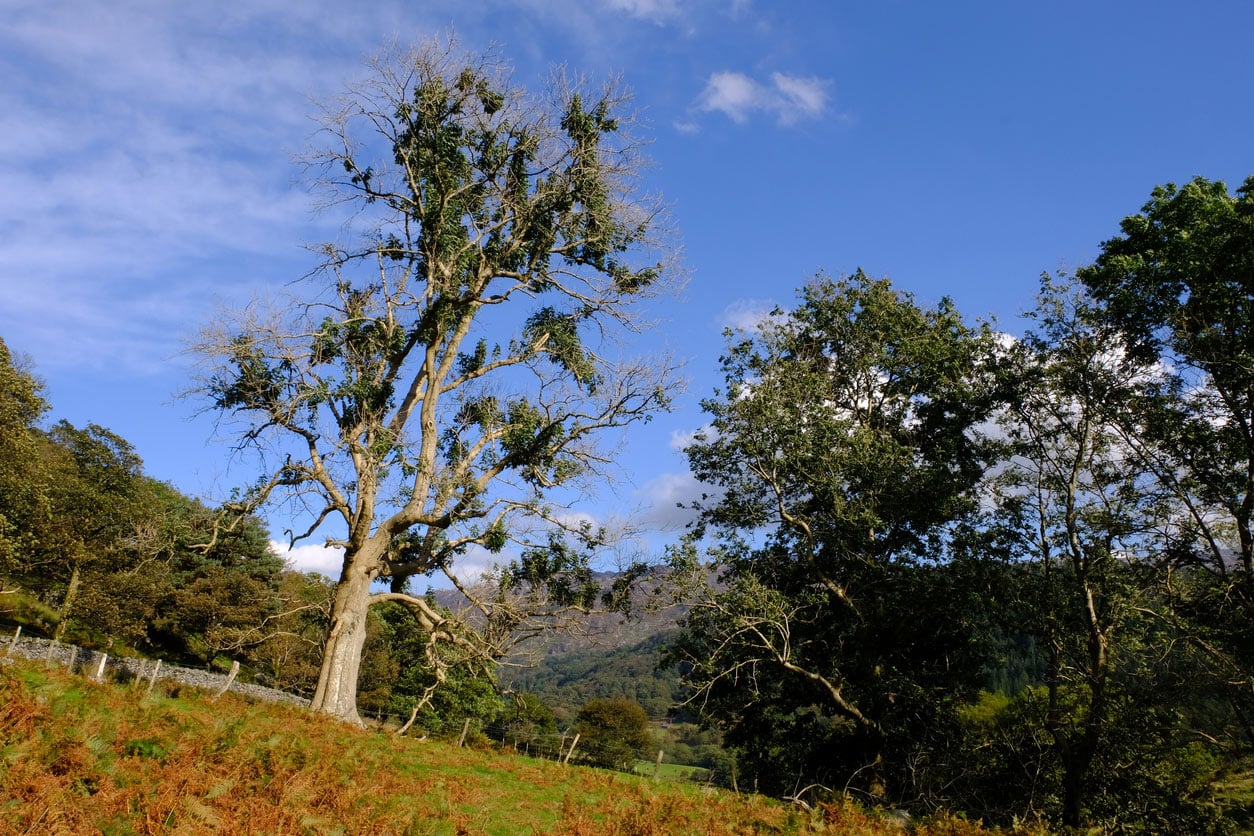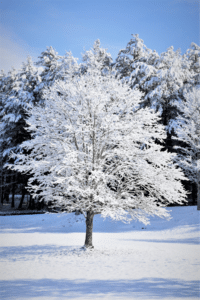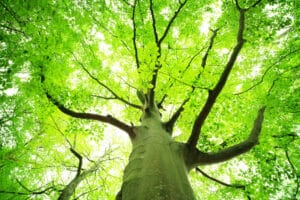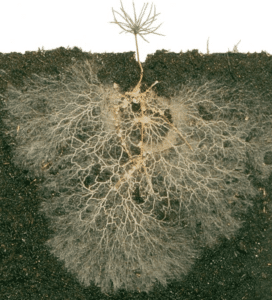Ash dieback is sweeping across the UK and Europe, damaging natural landscapes and resulting in the widespread decline of native ash trees. It was first recognised in the UK in 2012 and just 9 years on, it represents a significant environmental threat.
The rise in ash dieback cases is causing concern amongst landowners, as they are legally responsible for the health and safety of those who could potentially be affected by their trees. As affected trees pose a risk of branch fall, it’s critical to take notice and manage them properly in order to comply with UK law.
The team at Roots & Shoots have put together this short guide to ash dieback – helping you identify the problem and determine the best course of action for your trees.
What is ash dieback?
Ash dieback is a fungal disease that affects the common ash tree, known as Franxinus excelsior, and other Fraxinus species. The disease is believed to have been present in the UK since 2005, but went unnoticed until 2012, causing widespread issues in forested areas.
Trees in woodlands with high volumes of ash are likely to decline more quickly, due to the higher density of spores. It has also been observed that ash trees growing in open, cooler locations such as urban areas, will probably deteriorate more slowly.
That said, few ash trees are thought to be resistant to the disease, so all ash trees showing signs of dieback must be properly examined, especially those in areas of high footfall where falling branches pose a significant risk to human life and property.
How can I identify an ash tree?
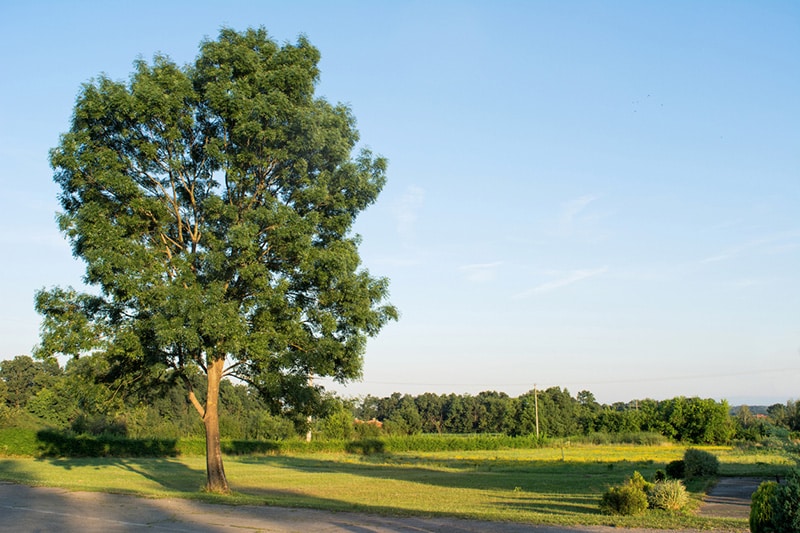
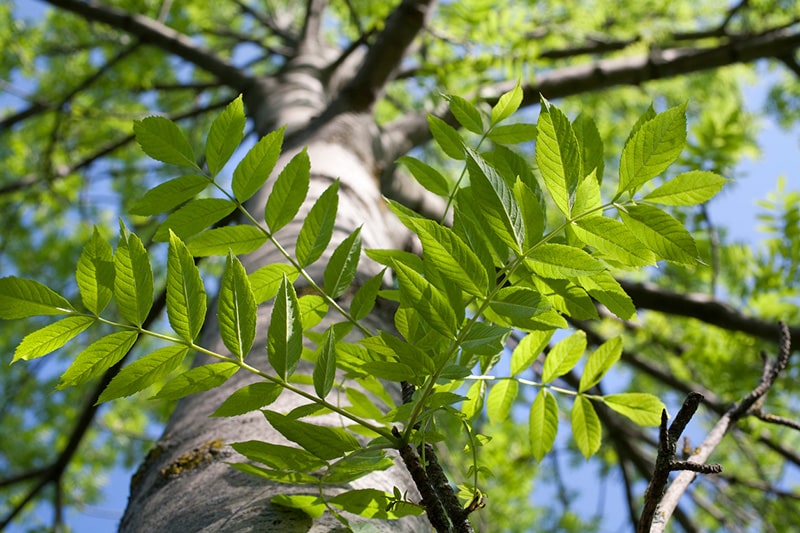
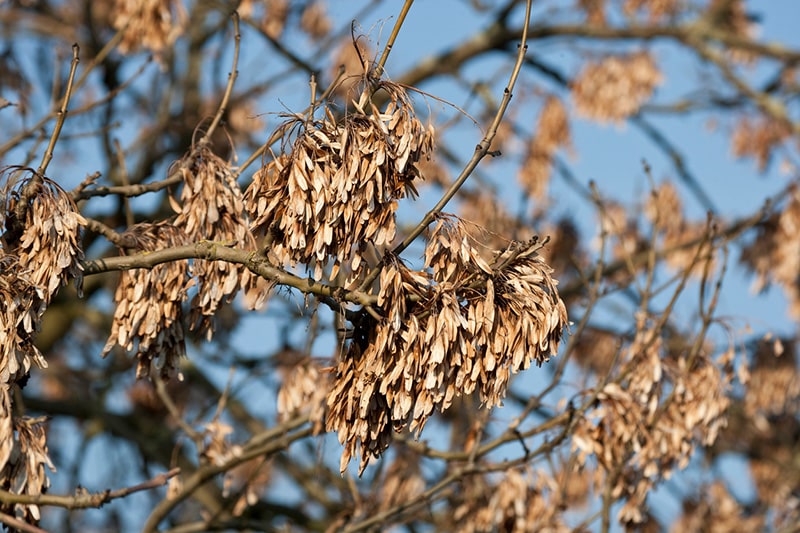
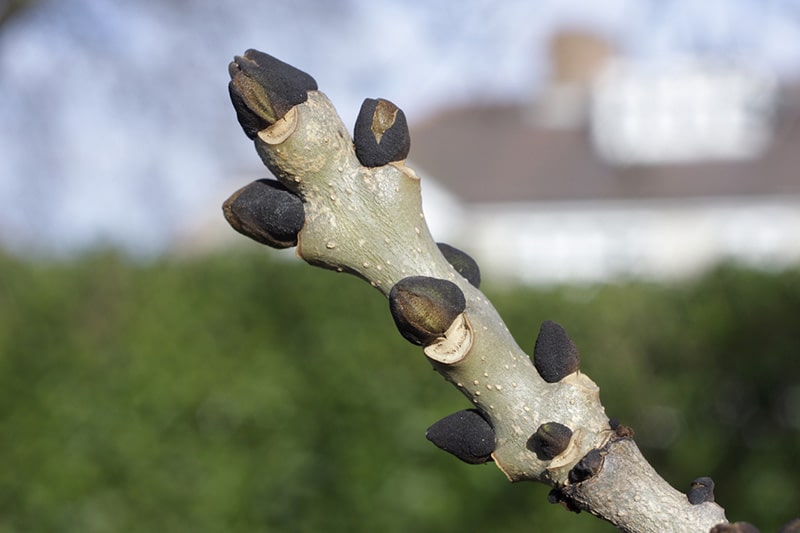
Fully grown ash trees can reach a height of 35m. They’re often recognised by their domed canopy and light green oval-shaped leaves, with tips spanning up to 40cm. In winter, ash trees will display distinctive black buds and flattened twigs.
How can I spot ash dieback?


It’s important to look out for signs of ash dieback and try to learn the severity of the disease in your local area. The best time to survey your trees is in the summer when the symptoms are more noticeable. Infected trees will often display wilted, blackened leaves and diamond-shaped lesions where older branches join the stem.
Other key indicators of ash dieback are:
- Mature trees display reduced crowns, often with clumps of foliage on branches where recovery shoots are produced
- Dead and blackened leaves amongst live foliage
- Diamond-shaped lesions or cankers in the bark (pictured above)
- Brown veins and stalks
- Small white fruiting bodies found on blackened leaf stalks in damp areas, usually seen from July to October
How do I manage a tree with ash dieback?
Even if you suspect low levels of ash dieback infection, it’s critical to get your trees surveyed by a professional arborist who will diagnose the problem. As you are legally responsible for trees on your land, a professional tree inspector must carry out a survey to determine the course of action for the trees. A robust monitoring system must be put in place, or the trees must be felled by a skilled tree surgeon who is accredited by the Arboricultural Association.
Choose Roots & Shoots
Our skilled arborists carry out tree surveys to identify possible disease and address any dangers in the surrounding area. By undertaking a thorough survey, we respond to any problems with a bespoke management plan, or take action where necessary. We also have industry contacts that can produce a full survey with written reports, if required.
If you have concerns about dieback affecting your trees, give us a call and we’ll gladly provide a free quote and consultation.

